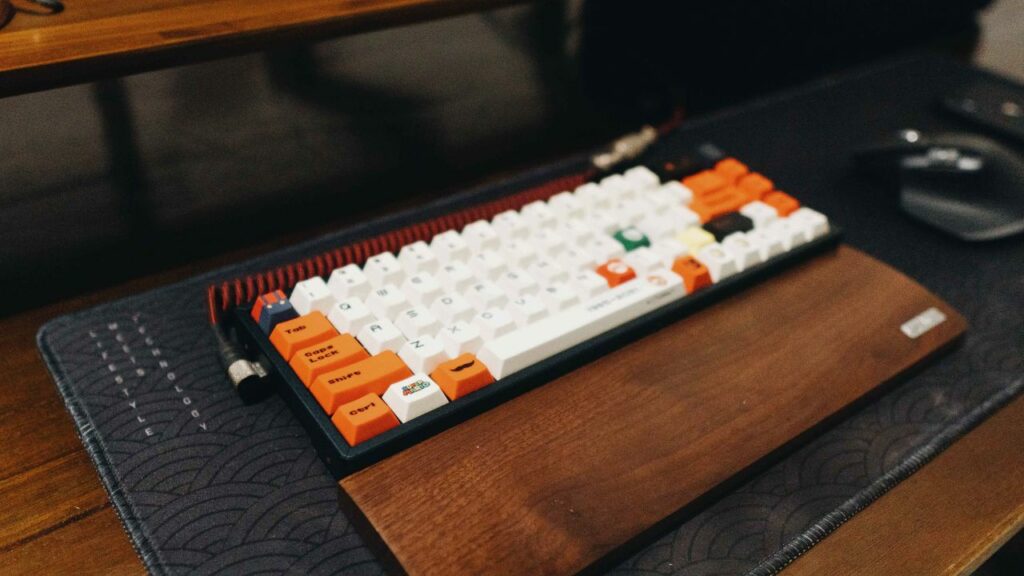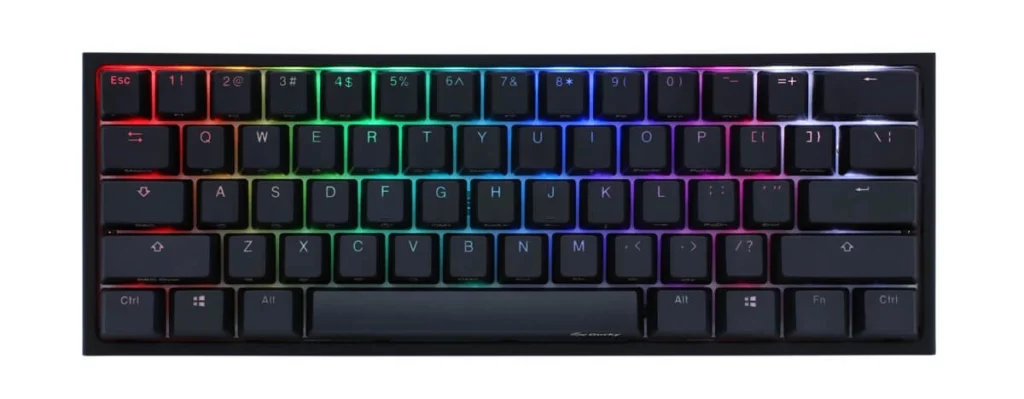
As more people turn to minimalist designs and space-saving solutions for their workspaces, compact keyboards have surged in popularity. Two popular compact keyboard options are 60% and 65% keyboards. This comprehensive guide will help you decide which one is right for you based on their advantages, disadvantages, and key differences.
What are 60% and 65% Keyboards?
60% and 65% keyboards are compact versions of standard keyboards, designed to be more ergonomic and space-saving. A 60% keyboard typically has 61 keys, lacks arrow keys, a home cluster, a number pad, and function keys. It usually substitutes I, J, K, and L keys as arrow keys. On the flip side, a 65% keyboard typically houses 66-68 keys, incorporating alphanumeric keys, modifiers, and arrow keys, though it omits a number pad and function keys. To delve deeper into the nuances of different keyboard sizes, read this in-depth article.
Comparison at a Glance
To help you better understand the key differences between 60% and 65% keyboards, here’s a comparison table summarizing their features, advantages, and disadvantages. This overview will assist you in making an informed decision based on your specific needs and preferences.
| Feature | 60% Keyboards | 65% Keyboards |
|---|---|---|
| Size and Portability | Extremely compact and portable. | Slightly larger but still compact. |
| Number of Keys | Typically 61 keys. | Typically 66-68 keys. |
| Arrow Keys | Lacks dedicated arrow keys. | Includes dedicated arrow keys. |
| Customization Options | Wide variety; more cases and keysets. | Limited due to unique layout. |
| Programmability | Highly programmable. | Similar programmability. |
| Aesthetics | Minimalistic look. | Slightly larger, but still sleek. |
| Typing Performance | Good, but may require adjustment. | Generally better, with more key options. |
| Gaming Performance | Suitable, but lacks some keys. | Suitable, slightly better functionality. |
| Programming Suitability | Depends on personal preference. | Depends on personal preference. |
| Build Quality | Depends on materials (aluminum preferred). | Similar, with emphasis on materials. |
| Keycaps | Customizable, PBT preferred. | Customizable, but options may vary. |
Advantages of 60% Keyboards
Size and Portability
60% keyboards, being smaller than their full-size brethren, can snugly fit into laptop bags. This makes them a prime choice for those valuing portability. Covering roughly 60% of a full-size keyboard, they pave the way for a more ergonomic and comfortable typing journey.
Customization Options
These compact keyboards are compatible with most custom keysets and have a wider variety of cases available compared to full-size keyboards. The cases are often cheaper too, making it a more affordable option for those who want to personalize their keyboard.
Programmability
A central allure of a 60% keyboard lies in its programmability. With a few intuitive keystrokes, you can customize a layer to your heart’s content, allowing a more personalized control over your typing experience.
Aesthetics and Minimalism
60% keyboards have a clean and minimalistic look due to the reduced number of keys. The build quality depends on the materials used, with aluminum bodies being highly durable.
Disadvantages of 60% Keyboards
Lack of Dedicated Arrow Keys
The main drawback of 60% keyboards is the absence of dedicated arrow keys. This can be difficult to adjust to initially, especially for users who rely heavily on these keys.
Absence of F-keys and Navigation Cluster
Another disadvantage is the lack of F-keys and a navigation cluster, which some users may find limiting depending on their usage.
Advantages of 65% Keyboards
Size Benefits Similar to 60% Keyboards
Just like 60% keyboards, 65% keyboards are also compact and offer similar size benefits. They are slightly larger but still provide an ergonomic and comfortable typing experience.
Dedicated Arrow Keys
One major advantage of 65% keyboards is the inclusion of dedicated arrow keys, making it a more appealing option for those who require these keys frequently.
Typing Performance
Typing performance is generally better on 65% keyboards compared to 60% keyboards. You can choose Brown switch options for a tactile feel without too much noise, and even opt for a wireless keyboard.
Disadvantages of 65% Keyboards
Limited Customization Options
Due to the unique layout and slightly larger size, 65% keyboards have fewer customization options. Some custom keysets may not fit as easily, and custom cases may be more difficult to find.
Gaming Performance on 60% and 65% Keyboards

Both 60% and 65% keyboards are suitable for gaming if you don’t require many keybinds. Although the lack of Fn (F1 – F12) Function Keys and Number Pad might be an initial adjustment, many users find that their gaming performance is not limited by these compact keyboards.
Typing Performance
As mentioned earlier, typing performance is generally better on 65% keyboards. The presence of dedicated arrow keys and the option to choose switch types, such as Brown switches, contribute to an improved typing experience. Additionally, wireless keyboards can offer more flexibility and convenience.
Programming on Compact Keyboards

When it’s about programming, the choice between a 60% or 65% keyboard often boils down to personal preference. Some programmers might miss the number pad on the keyboard’s right side, customary to full-sized keyboards, while others might relish the more compact layout. It’s crucial to consider your unique needs and preferences when deciding.
The Smaller vs Larger Debate
Different perspectives exist on whether smaller or larger keyboards reign supreme, but it fundamentally depends on individual needs and preferences. Smaller keyboards occupy less space and add an aesthetically pleasing touch to a workspace, while larger ones might offer added functionality for specific users.
Build Quality and Keycaps
The construction quality of your compact keyboard is pivotal for durability and longevity. Choosing aluminum bodies can provide a resilient and long-lasting keyboard. Additionally, it’s advisable to favor PBT keycaps over ABS ones for an upscale feel and appearance. Keycaps can also be customized to carve out a distinctive and personalized look for your keyboard.
Conclusion
In conclusion, the decision between a 60% and a 65% keyboard hinges on your unique needs, preferences, and applications. Each type brings its pros and cons to the table, making it essential to weigh these aspects before making your choice. If you’re keen to explore some of the finest 60% keyboards out there, check out this article. With the right compact keyboard, you can relish a more ergonomic and cozy typing experience while freeing up precious desk space.